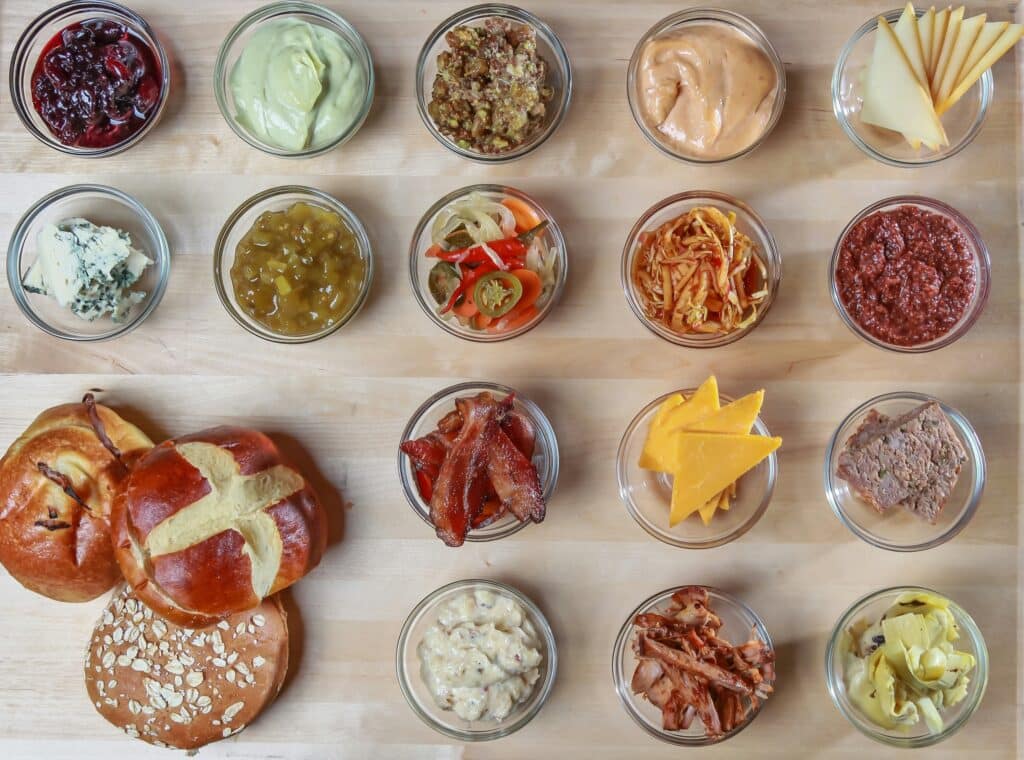Messages about ultra-processed foods continue to be everywhere. A processed food is one that has been altered in some way during preparation. This can include anything from washing, chopping, fermenting and pasteurising to more industrial processes like homogenising and adding food additives.
This variation within ‘processed food’ is one of the reasons why the ultra-processed food (UPF) food category came about in 2009 by a Brazilian researcher called Carlos Monteiro and his team. There’s no single, universally agreed definition of UPFs, and discrepancies exist both between definitions and in how they are applied in research. The most widely used framework is the NOVA classification from 2017, which divides foods into the following four groups:
Group 1: Unprocessed and Minimally Processed
These include unprocessed foods such as fruit, vegetables, nuts, seeds, eggs, and milk, as well as minimally processed foods that have been altered to extend shelf life but contain no added ingredients, such as pasteurised milk, dried fruit, frozen fruit and vegetables.
Group 2: Processed Culinary Ingredients
The classification for substances obtained from group 1 foods by industrial processes such as pressing, refining, and extracting. These tend to be used to prepare, season and cook group 1 foods, and they may contain additives that prolong shelf-life or prevent microorganism proliferation. Examples include oils, butter, lard, sugar, honey, and salt.
Group 3: Processed Foods
These are culinary ingredients (i.e. group 2 foods) that have been added to unprocessed (i.e. group 1) foods using preservation methods such as canning and bottling. They may contain additives that prolong shelf-life or prevent microorganism proliferation. For example, fresh bread, canned beans, canned veg, salted nuts, smoked salmon, and cured meat.
Group 4: Ultra-Processed Foods
These foods are made mostly or entirely from substances derived from foods and additives, with little if any intact Group 1 food. They are made by a series of industrial processes, and created to be convenient, branded and attractive. Examples include mass-produced bread, breakfast cereals, fizzy drinks, sweets, crisps, ready meals, pastries, chicken nuggets, powdered soups and sauces.
Ultra-processed confusion
If you find the NOVA categories and UPF definition confusing or difficult to apply, you’re certainly not the only one! There are lots of grey areas, and interpretations vary between researchers and nutrition professionals. For example, what threshold is used to identify an “industrial formulation” or whether something contains “little or no whole food”?
In 2019, Monteiro published a paper called “Ultra-processed foods: what they are and how to identify them” to try and clear things up. In this he says:
A practical way to identify an ultra-processed product is to check to see if its list of ingredients contains at least one item characteristic of the NOVA ultra-processed food group, which is to say, either food substances never or rarely used in kitchens (such as high-fructose corn syrup, hydrogenated or interesterified oils, and hydrolysed proteins), or classes of additives designed to make the final product palatable or more appealing (such as flavours, flavour enhancers, colours, emulsifiers, emulsifying salts, sweeteners, thickeners, and anti-foaming, bulking, carbonating, foaming, gelling and glazing agents).
Although some specific examples are provided, this still leaves room for subjectivity, as what counts as “rarely used in kitchens” depends on cultural norms, culinary skills, and accessibility.
In everyday conversation, “UPF” often becomes shorthand for “junk food” or “bad food” (not terms I endorse). Yet under NOVA, baby formula, meal-replacement shakes, shop-bought wholegrain bread and hummus are all classed as UPFs – whereas honey, sugar, salt and certain types of crisps and ice cream are not UPFs.
The confusion around UPFs adds to the panic for many, with people pouring over ingredient lists, anxiously debating specific products in forums or evangelising influencers (and even medical professionals with no nutrition training or expertise) who amplify fear around these foods.
What does the research say?
Observational evidence
Most of the research linking ultra-processed foods (UPFs) to health outcomes comes from observational studies that have found an association between higher UPF intake and greater risk of having a higher BMI, type 2 diabetes and heart disease, certain types of cancer, mental health issues, sleep issues, and all-cause mortality. A number of studies also associate UPF intake with lower overall diet quality, with fewer fruit, vegetables, fibre and micronutrients.
Although observational research is important, it’s crucial to remember that it shows correlation, not causation. This really muddies the water when it comes to UPFs and health, as those who eat more UPFs may also be more likely to experience inequalities which can influence both diet and health outcomes – such as having a lower income, reduced access to fresh foods, higher stress levels, or irregular working hours. And it’s impossible to correct for all possible confounding factors.
Randomised controlled trials
There are few randomised controlled trials (RCTs) that have directly tested UPFs in controlled conditions.
The first to do this was a small NIH study by Kevin Hall and his team in 2019, which gained a lot of attention. This study compared two diets – one based on unprocessed foods, the other on ultra-processed foods. Both were carefully matched for calories, macronutrients, sugar, sodium, and fibre and participants could eat as much as they liked. On the UPF diet, participants ate around 500kcal/day more and gained about 1kg in two weeks. Whereas on the unprocessed diet, participants lost about 1kg over the same period.
However, this study only lasted two weeks, included just 20 participants, and was conducted in a controlled setting rather than real life. The UPF meals were more energy dense, lower in protein, and included more desserts and sugary drinks, while also differing in texture and palatability. These factors make it hard to separate the effects of processing itself from the impact of overall meal composition.

A more recent RCT by Dicken et al. (2025) addressed a number of these limitations as it was larger (55 participants), longer (eight-week crossover trial) and the diets were aligned with the Eatwell Guide. Further, it was conducted in a real-life setting as all meals were delivered to participants’ homes, and intake was ad libitum. In this study, both diets led to weight loss; on average those in the minimally processed group lost 1.84kg and those in the UPF group lost 0.88kg. Again, energy density was higher in the UPF group (1.7kcal/g vs 1.37kcal/g), but most other nutritional factors were closely matched, including fibre (32.4g vs 35.9g).
Interestingly, markers of heart and metabolic health differed as although triglycerides lowered more in the minimally processed group, LDL cholesterol and glucose lowered more in the UPF group. Retention was also better in the UPF group, with 20% of those in the minimally processed group dropping out and no dropouts in the UPF group.
So, another way of viewing these results is that following the Eatwell Guide leads to weight loss and improvements in health outcomes (what a surprise!). But headlines rarely mention that consuming a diet high in UPFs can lead to weight loss and improved cardiometabolic health, or that a UPF diet can be nutritious and more sustainable to follow than a minimally processed diet.
Overarching limitations
Looking at the evidence base as a whole, several issues remain:
- Geographic bias: Most studies come from high-income countries, limiting generalisability.
- Definition issues: NOVA categories are applied inconsistently, with many grey-area foods.
- Residual confounding: UPF intake may reflect other factors (e.g. socioeconomic status, lifestyle, overall diet quality). In the NutriNet-Santé cohort, the link with mortality disappeared after excluding people with pre-existing illness, suggesting this could be a marker for other risk factors rather than an independent risk factor.
- Unclear mechanisms: It’s uncertain whether risks come from processing itself, specific additives, nutrient profile or eating behaviours.
- Dose–response gap: Increased risks are mostly seen at high intakes; low-to-moderate intake shows little or no added risk.
What about emulsifiers?
Emulsifiers are substances that help ingredients mix when they wouldn’t naturally combine – for example, egg yolk in mayonnaise allows oil and water to blend. In manufactured foods, emulsifiers are used in a similar way to improve texture, stability, and shelf life. All emulsifiers are strictly regulated for safety by authorities such as the UK Food Standards Agency (FSA).
Some research has raised questions about their long-term effects. In a 2015 study in mice, very high doses of carboxymethylcellulose and polysorbate-80 were linked with changes in the gut microbiome, weight gain, and inflammation. More recently, lab and animal studies, as well as one small human study with 16 participants, suggest certain emulsifiers may affect gut diversity and inflammation, particularly in people with inflammatory bowel disease.
However, these findings should be interpreted cautiously. Most evidence comes from animal or lab studies using levels of emulsifiers far higher than typical human intakes. Current human data is very limited, and there is no strong evidence that emulsifiers pose a general health risk for the wider population.
Eliminating emulsifiers from the diet is not only impractical, but also unnecessary at this stage. A more balanced approach is to focus on overall dietary quality such as variety, fibre, fruit and vegetables – rather than fearing individual additives.
Nutritional Considerations
Many nutritional professionals are increasingly frustrated by the UPF narrative, as degree of processing does not automatically determine nutritional quality. For example, fortified soya milk is classed as an ultra-processed food (UPF) because it’s fortified with important nutrients like calcium and vitamin D. Whereas organic soya milk, which doesn’t provide calcium, is not a UPF. Meanwhile, unprocessed ingredients such as salt and sugar are not UPFs, but they can contribute to poor health if consumed in excess. It’s clear that the less-processed option is not always more nutritious.
Processing itself has a number of benefits. It can improve shelf life and food safety, via processes like pasteurisation, while enabling fortification (e.g. fortified cereals). It can also enhance convenience and accessibility, and improve satisfaction and enjoyment of food.
We already have good evidence that excessive fat, salt, and sugar intake can negatively impact health, and food additives undergo strict safety testing before approval. While some specific concerns merit ongoing research (for example, in the case of emulsifiers or certain sweeteners), excluding nutrient-rich UPFs unnecessarily can reduce diet quality and worsen relationship with food.
There is also no good evidence to suggest that simply raising awareness of UPFs leads to meaningful or sustainable long-term behaviour change. A recent report from the UK’s Scientific Advisory Committee on Nutrition (SACN) reflects this complexity:
There continues to be significant limitations in the evidence base. It remains unclear to what extent observed associations between UPFs and adverse health outcomes are explained by established relationships between nutritional factors and health outcomes on which SACN has undertaken risk assessments. There are still concerns and difficulties around the commonly used NOVA classification system.
The report goes on to highlight that subgroup analyses have found higher risks with certain UPFs in particular, such as sugar-sweetened beverages and red and processed meats, rather than with all UPFs equally. Again, this isn’t new information specific to UPFs.
Cooking From Scratch
There are many benefits of cooking from scratch, including greater control over ingredients, opportunities for creativity and skill-building. Cooking with kids can also be a pleasant activity for building their skills, while also exposing them to different foods without placing pressure on eating.
But this isn’t always realistic or accessible. Barriers to cooking from scratch include the cost, disability and limited time, space, equipment and/or cooking skills. For many people, convenience foods play a crucial role in meeting their nutritional needs.
This is why the message that “whole food is always better” can be problematic. It often carries undertones of elitism and ableism, as well as an appeal to nature; the assumption that what is natural or traditional is inherently healthier. And these narratives don’t exist in isolation. The growing popularity of anti-UPF messaging overlaps with broader cultural trends – like the rise of traditional values and ‘trad wives’ on social media, who promote spending hours cooking from scratch.
But homemade doesn’t always equal healthier. A study from 2012 found that TV chef recipes contained less fibre, and more energy, fat, and saturated fat than comparable supermarket ready meals. Meanwhile, a study from 2023 and the 2025 RCT from Dicken et al. also both found that you can eat a nutritious, high-quality diet when this is made up of predominantly ultra-processed foods.
Summary
Ultra-processed food is a broad category that researchers and everyday people still struggle to clearly define. While observational studies link high UPF intake with poorer health, the evidence is complicated by inconsistent definitions, confounding lifestyle factors, and uncertainty around whether risks come from processing itself, specific additives, or diet composition. Emerging trials show that, when aligned with healthy eating guidelines, diets high in UPFs can still support health.
Processing also brings clear benefits, from food safety and fortification to affordability and convenience – and not all UPFs are nutritionally poor. Demonising them risks stigmatising everyday foods, worsening dietary quality if nutrient-rich options are excluded, and fuelling food anxiety.



